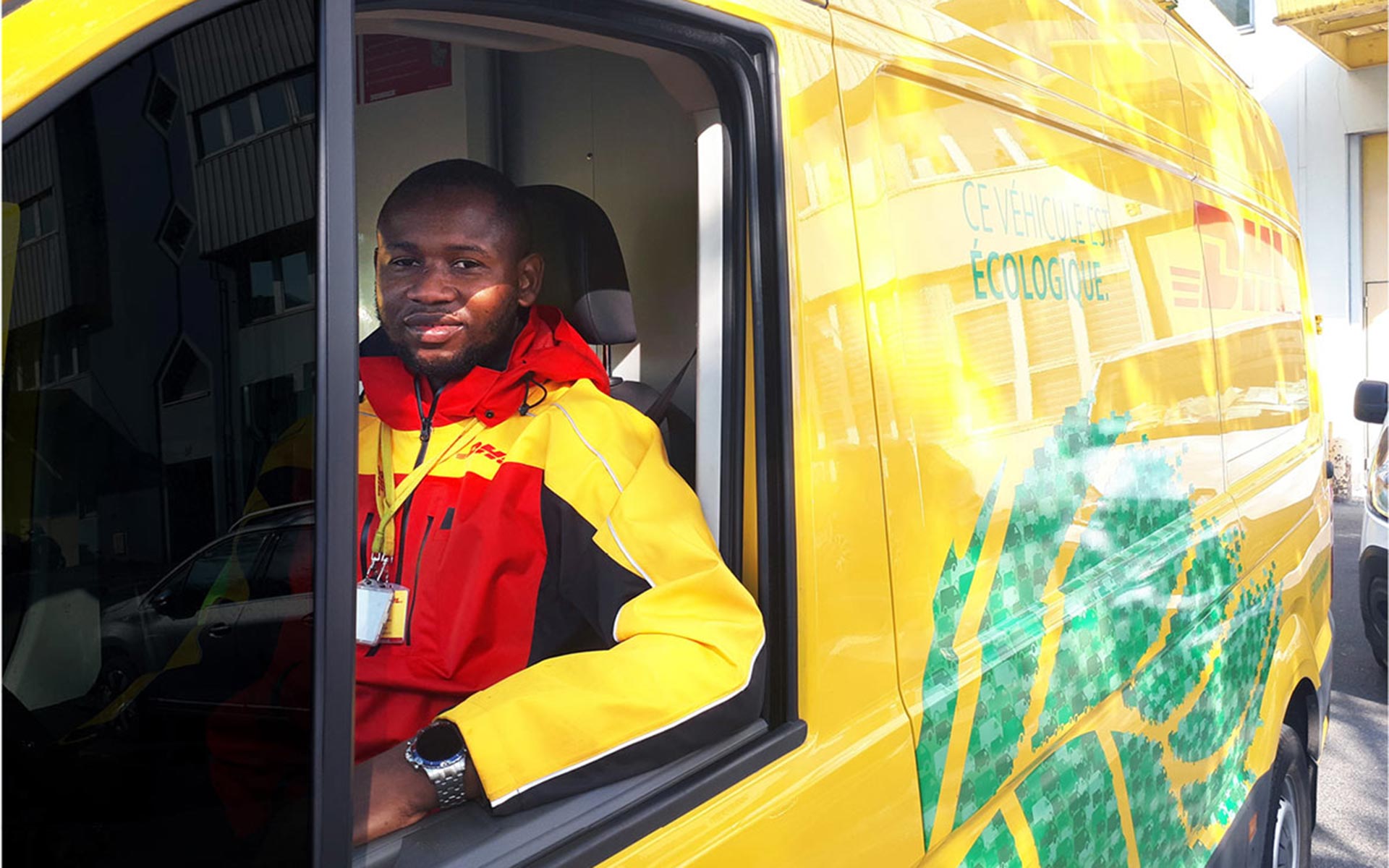
VOILÀ: PACKAGES WITH THE eTGE
Crowded streets, winding alleys, multi-lane avenues – and bicyclists and motorcyclists whizzing around everywhere. With its intensive traffic, the French metropolis of Paris is not an easy place to live, especially for postmen and parcel deliverers. So it’s high time to set an example against noise and exhaust fumes – and switch to electric mobility. The parcel service provider DHL Express is making a start in the popular 9th arrondissement and delivering the parcels of Parisians locally emission-free with a MAN eTGE.
When Mamadou Koné is on tour in central Paris, speed is of the essence. He delivers around 65 parcels and packages every morning and often does a second shift in the afternoon. On his route, he stops at people’s homes, offices, restaurants, and stores. Every now and then there is time for a quick chat — Koné knows his customers, and his customers know and appreciate him. Things have been much easier for him since he started driving an all-electric MAN eTGE van.
I no longer have to constantly start and stop the engine, because electric vehicles don’t idle like diesel delivery vans. That makes the job very pleasant.
Mamadou Koné (DHL Express courier)
Mamadou Koné has been working for DHL Express for more than two years. His delivery district is in Paris’s 9th arrondissement — a part of the city center famous for its bustling boulevards and department stores. Koné’s route takes him past the old Palais Garnier opera house and ornate building façades dating back to the 19th century. He also passes La Madeleine every day — the church that looks like an ancient temple.
Clean delivery in the city center
Driving a delivery vehicle in the center of Paris is no easy task. Again and again, Mamadou Koné has to stop because passersby suddenly step into the road or other vehicles pull out in front of him. His work rhythm is marked by constant braking and accelerating, more than six hours a day. With a combustion engine, this would make a lot of noise, use a lot of fuel, and produce a lot of exhaust fumes and CO2 emissions — in contrast to MAN’s electric van, which allows packages and parcels to be delivered with zero emissions. “It’s an ideal van for use in the city,” says Koné, and adds that it is great fun to drive.
With its noiseless, electrically powered fleet, DHL is doing its part in Paris to help transform the transportation sector — an important milestone on the road to climate neutrality and greater efficiency. “We’re always looking for new solutions to reduce our environmental footprint,” says Laurent Zerafa, fleet manager at DHL Express in France. The company has doubled its green fleet to 100 vehicles in the space of two years. Each working day, DHL sends the electric MAN eTGE on tour in the heavy traffic of the 9th arrondissement. And the logistics company’s electric fleet is growing all the time — in Paris, France, and around the world.
Fully charged in just three hours
In densely populated cities with high traffic volumes, the MAN eTGE really comes into its own. This is evident on Mamadou Koné’s journeys, too. He is on the road for hours, even though he only drives 14 kilometers per shift. When he has delivered all his parcels, he returns the van to the DHL branch at Porte d’Aubervilliers in the north of the Périphérique ring road, about four kilometers from his delivery district.
There, he can plug the vehicle into a quick-charge station — although this is not necessary every day. “A full battery usually lasts me more than a week,” he says. Naturally, his power consumption also depends on external factors such as air temperature, topography, and driving style. “As a rule, I plug in the van on Friday at the latest.” There is a growing number of public charging stations in Paris that Koné could theoretically use to recharge the battery, but he doesn’t need them, because the quick-charge stations at his DHL site take just three hours to return an empty battery to full power.
But the MAN eTGE doesn’t just run on electricity from the socket. Its battery also stores the kinetic energy generated by braking and rolling during the drive, which is then converted into electricity by a generator. Thanks to this recuperation, as it is called, the range of the vehicle can be increased: in city traffic, it can cover a realistic distance of between 120 and 140 kilometers.
Meanwhile, Koné’s workday is drawing to a close and he returns to the branch. The charge level of his battery is still high enough to last for several more trips. “I’ll charge the eTGE today anyway,” he says as he connects the vehicle to a free charging point. “But for now, I’m going to call it a day.”
Text Heimo Fischer
Photos DHL, GettyImages/Alexander Spatari

